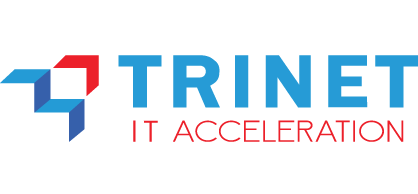Solutions > Capex to Opex

Capex to Opex
Business Challenges
In today’s fast-evolving business landscape, organizations are increasingly turning to cloud solutions and managed services, transitioning from traditional capital expenditures (CapEx) to operational expenditures (OpEx). This shift brings both opportunities and challenges. Here are five key challenges businesses may face in this transition, as highlighted by the evolving nature of CapEx vs. OpEx:
1. Unpredictable Operational Costs
- While OpEx offers flexibility, it can also lead to unpredictable monthly costs, especially when scaling cloud services or subscribing to third-party solutions.
- Unlike the upfront capital investment of CapEx, ongoing operational expenses require careful monitoring to ensure budget stability.
2. Lack of Control Over Infrastructure
- With the move to OpEx, businesses may find themselves dependent on third-party service providers for cloud infrastructure and management.
- This reduces direct control over the systems and can increase risk in terms of performance, security, and service disruptions.
3. Difficulty in Forecasting Long-Term Financial Impact
- Transitioning from CapEx to OpEx can make it challenging for organizations to predict their long-term financial obligations.
- OpEx involves recurring payments, and without careful forecasting and planning, businesses can encounter unexpected costs that affect their bottom line.
4. Security Risks in Cloud-Hosted Solutions
- With OpEx and the reliance on external providers, businesses may face increased security challenges, particularly when it comes to protecting sensitive data across cloud environments.
- Ensuring security while maintaining flexibility can be difficult without the proper safeguards.
5. Limited Flexibility in Scaling
- While OpEx offers scalability in theory, businesses may still face challenges in rapidly scaling their services due to budget constraints or vendor limitations.
- Unlike CapEx, where large investments upfront may enable quick growth, OpEx models may require ongoing negotiations and adjustments, making it more difficult to react swiftly to market demands.
The shift from CapEx (Capital Expenditure) to OpEx (Operational Expenditure) is an important consideration for businesses in managing their financial models.
While CapEx typically involves large upfront investments in physical assets like servers or hardware, OpEx focuses on recurring, ongoing expenses such as cloud services or subscription-based solutions.
Businesses are increasingly moving towards OpEx models due to their flexibility and scalability, especially in a fast-changing environment.
Key Features of CapEx and OpEx Models include:
- Upfront Capital Investment (CapEx) → CapEx requires large one-time investments in assets that are expected to provide long-term value. This model involves purchasing hardware, infrastructure, and physical assets.
- Recurring Operational Costs (OpEx) → OpEx involves ongoing, recurring payments for services like cloud computing, software subscriptions, or external managed services, providing more flexibility with cash flow management.
- Flexibility & Scalability (OpEx) → OpEx models allow businesses to scale their operations rapidly without needing significant capital outlays, adapting to changing business requirements.
- Long-Term Investment (CapEx) → CapEx typically involves investments that have a long useful life and help businesses build their infrastructure, but it may be more difficult to change or scale quickly.
The benefits of adopting the OpEx model include:
- Flexibility and Agility → OpEx provides greater flexibility by enabling businesses to scale their operations easily without the heavy upfront investment associated with CapEx.
- Improved Cash Flow → OpEx improves cash flow by turning large capital expenditures into manageable, predictable expenses.
- Reduced Risk → By shifting to OpEx, businesses can mitigate the risk of investing in technology that may become obsolete or underutilized.
- Cost Efficiency → OpEx helps organizations avoid spending on unnecessary infrastructure, paying only for what is used, which can lead to cost savings in the long term.
CapEx and OpEx models are used in various industries, for example:
- Tech Startups → Many technology companies prefer OpEx to quickly scale their infrastructure without the burden of large capital investments.
- Manufacturing → Some manufacturing companies may choose CapEx for purchasing specialized equipment that will be used for years, whereas OpEx may be chosen for smaller, flexible operational needs like software as a service (SaaS).
- Healthcare → Healthcare providers may choose OpEx for IT services and cloud applications while opting for CapEx when investing in medical equipment or facilities.
- Retail → Retailers use OpEx to handle their e-commerce infrastructure, cloud storage, and point of sale systems, while investing in CapEx for long-term assets such as store fixtures or warehouses.
Our solutions for CapEx and OpEx include:
- OpEx Financial Planning → We help you optimize your operational expenses, ensuring that you get the most value from your ongoing services and subscriptions.
- CapEx Investment Strategies → Our team provides consulting to help you make the right investments in capital expenditure, ensuring that your business gets long-term value from assets purchased.
- Cost Optimization → We assist in analyzing and balancing CapEx and OpEx to ensure that you get the most effective combination for your business needs.
- Scalability & Growth Support → Whether you choose CapEx or OpEx, we support your business’s growth by ensuring that your investments align with future requirements.
Contact our experts for further information













